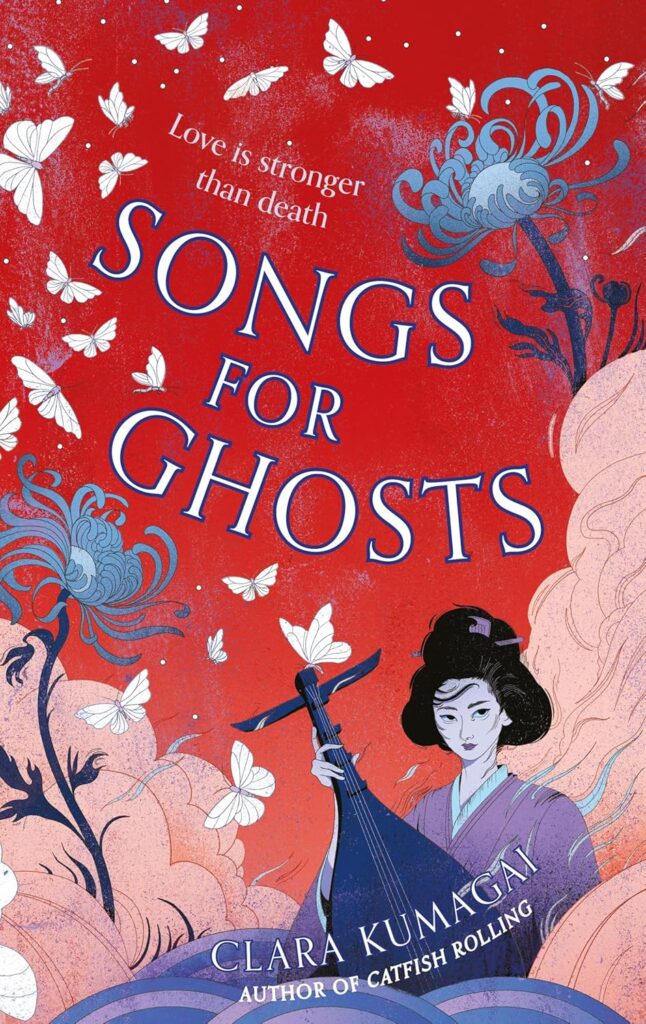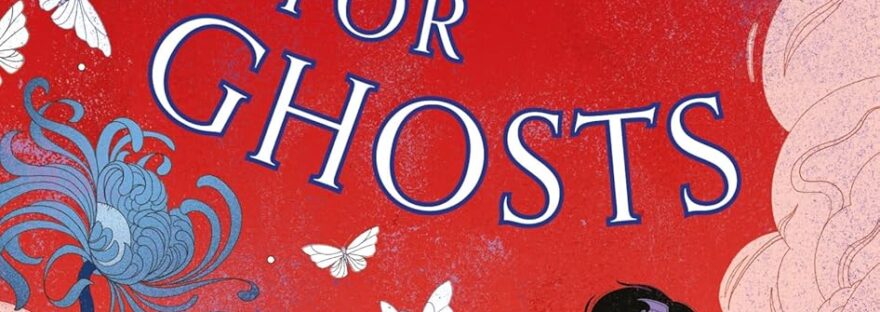By Clara Kumagai (Zephyr, 2025)
‘Who are you?’ I burst out. ‘How did you—’
She raised her head slowly. Her hair was long and dark and straight, half-covering her face, a pale oval. Her lips moved, but I couldn’t hear what she said. Benny quietened. Her eyes were like mine.
There was a noise from another room – my room – and I half-turned towards the sound, then remembered, caught myself and whirled back to the crib. There was nobody there, no woman, nothing. Only Benny, blinking his eyes, clenching and unclenching his little hands.
When 17-year-old Adam discovers a diary that used to belong to his mother in the attic, he is immediately entranced. The author is a young Japanese woman, struggling with relationships, a need for freedom, and the differences between cultures. Struggling with his own identity and relationships, the diary is a perfect escape for Adam, as he finds himself drawn into the young woman’s story.
The diary writer isn’t the only one being visited by ghosts though, and Adam vows to find out more about her. So when the opportunity comes to visit Japan – home of both the diary writer and his mother who he still knows little about – it seems like fate. But some ghosts can’t be laid to rest so easily…

When Songs for Ghosts begins, we are introduced to our protagonist Adam: a Japanese-American teenager, who has just been dumped by his first serious boyfriend. He’s full of angst, anger, and heartbreak, lashing out at friends and family.
He’s part of a blended family, which doesn’t make things easier; he has a step-mum, a 1-year-old half-brother, and a military father who is rarely home. His Japanese mother died when he was young, and his father doesn’t like to talk about her.
So when he finds the diary, written over 100 years ago, he empathises strongly with the author. Her situation may be different, but he finds himself caring deeply for her, both her joys and sorrows. He’s incredulous when she first plays the biwa (a Japanese lute) and describes the ghosts who come to listen, but has to come to terms with it when he starts seeing things himself.
The cover of the hardback (I don’t know if the paperback will be the same once released) is gorgeous, with the young Japanese woman and her biwa covered in a blue filter, starkly cold against the warm reds and pinks of the landscape and sky through which white butterflies dance.
I thought the structure of the book was well done; each chapter features a present day section followed by entries from the diary, up until Adam finishes reading it. The font difference between the two is a great visual reminder, with the present day written in sans serif making the serif font of the past look even more old fashioned.
Kumagai does an excellent job of making both halves of the writing feel distinct from each other. Writing in different voices is common for authors from book to book, but less so within a single book – especially characters whose lives, experiences, and cultures are so far apart (Adam may be half-Japanese, but he’s grown up in America).
Like Adam, I felt compelled by the diary entries – there’s something oddly humbling about reading a story within a story, one that has (technically) ended long before the book you’re reading began. Kumagai’s research, as evidenced in the afterword, is very thorough, lending the diary a feeling of authenticity. I for one love learning more about other cultures, and it’s fascinating to be learning it alongside the main character.
It’s also interesting to see Adam dealing with different aspects of his – and others – identities, depending on where he is. While in America, he experiences racism; nothing overt, but the kind of casual microaggressions that wear you down over time. In Japan however, the issue lies in sexuality and although he is comfortable in his, he has to understand that the same can’t be said for others.
(It’s worth noting that although the book has a reading age of 12+, it does feature a couple of moments of sexual intimacy – nothing graphic, but it’s worth keeping in mind if you’re buying it for a younger reader.)
Although this story may sound quite dark, I want to be clear that it’s not all like that. The banter between Adam and his friends Sylvia and Jo is perfect, and the wonder of Adam experiencing Japan and his own mother’s culture for the first time is quite wholesome and endearing.
Watching Adam chase the tale of this woman, seeing the comparisons between his own life and those laid out in the diary, and understanding how it all comes together at the end, I’m not ashamed to say that I got teary more than once before the final page. I wish I could explain more of the story, but it really is something you have to experience for yourself!
I’ll confess that I’ve not seen Madame Butterfly, which the premise of part of the story is based upon. I definitely feel like I need to watch it, and then come back and give this a second read, to see the layers and implications I may have missed.
Songs for Ghosts is a poignant and captivating story about betrayal, loss, family, and identity. It’s about learning from the past and remembering those who have come before. It’s about honour and respect, but also truth and acceptance – and that sometimes that involves letting go.
It’s a story that, in both the present and the past, will stay with me long after this first reading.
If you want to solve the mystery of the woman and the diary, you can order a copy of Songs for Ghosts at the link below.
(Disclosure: If you buy books linked to our site, we may earn a commission from Bookshop.org, whose fees support independent bookshops.)
Looking for more ghostly fiction? Check out some of our previous book reviews here.

